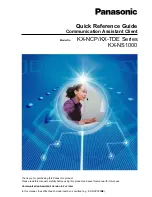
16
NOTE
Warranty will be void if operated outside of these conditions.
8.3 DC Cables
CAUTION
FIRE HAZARD:
Undersized cables can become hot and may potentially catch fire.
Failure to follow these instructions can result in minor to moderate injury.
The DC battery cables should meet the following requirements.
1. Copper-stranded cable.
DC cables must be stranded, copper, and must
be rated 90°C (194°F) minimum. The cables must be terminated with
lugs that fit the DC terminals.
2. Minimum cable lengths.
Select a location that minimizes the length of
battery cables in order to reduce voltage drop from impedance leading
to reduced performance.
3. Appropriate cable gauge.
The cables should be capable of carrying the
normally expected current, plus a margin of safety.
4. Proper polarity.
Positive ( + ) connected to positive ( + ), and negative ( - )
connected to ( - ).
8.4 DC Protection
CAUTION
FIRE HAZARD:
Undersized fuses and disconnects may become overloaded and
potentially cause a fire. Fuses and disconnects are required to open before the cable
reaches its maximum current carrying capability.
Failure to follow these instructions can result in minor to moderate injury.
Additional DC overcurrent protection and a DC disconnect switch are required to
protect the system and DC battery cables:
1. Appropriate size.
Fuses and disconnects must be sized following local
codes to protect the wiring in the system and are required to open before
the cable reaches its maximum current carrying capability.
2. Install protection in the positive cable.
The fuse and disconnect should
be located as close as possible to the battery and must be installed in the
positive cable. Applicable codes may limit how far the protection can be
from the battery.
NOTE
AC circuit breakers and DC circuit breakers are not interchangeable. Check the label on the
circuit breaker to ensure it is the correct type and rating. Use only DC circuit breakers.













































